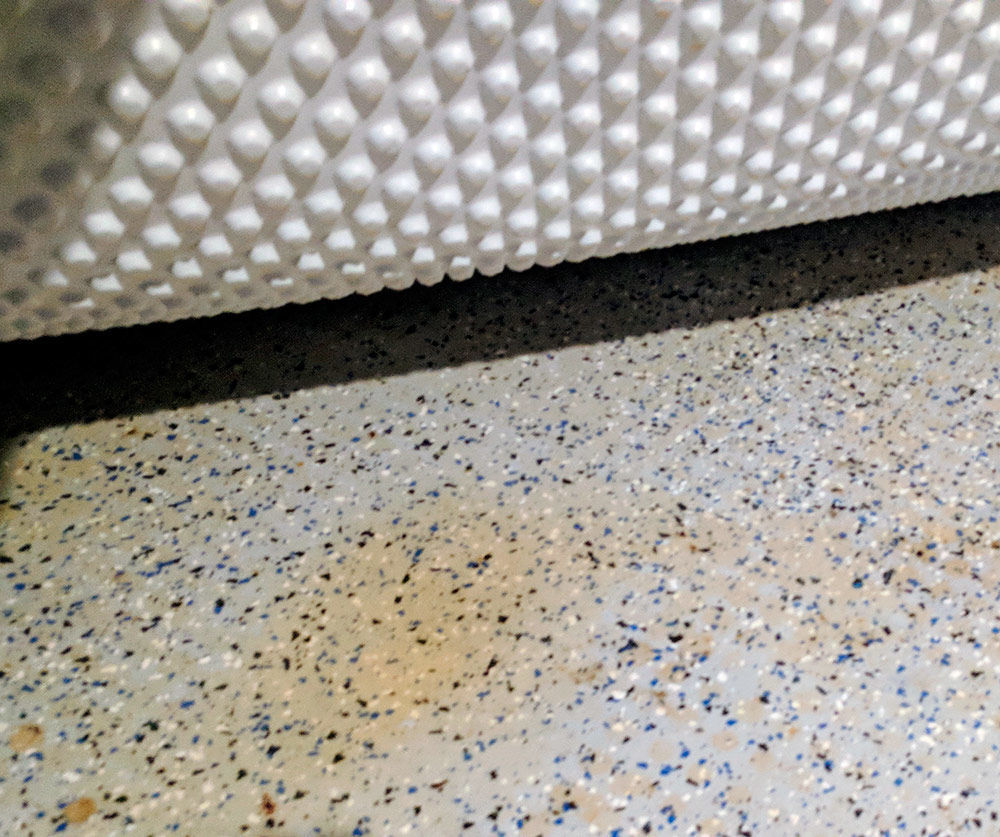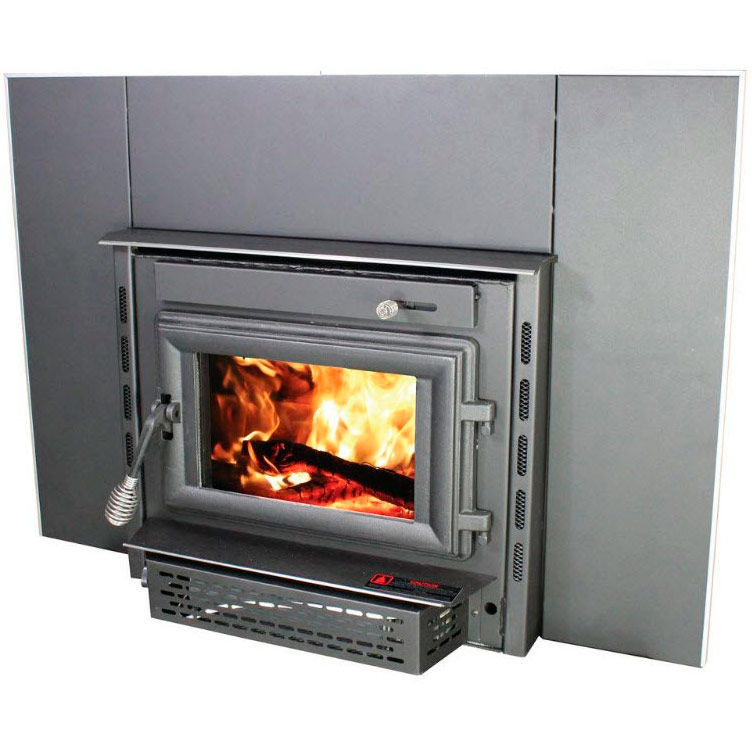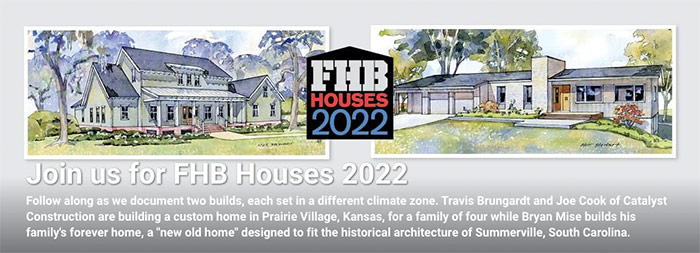Podcast 585: The Best of the Fine Homebuilding Podcast, Volume 5
From dormer additions to damp basements, a selection of our favorite clips from episodes 166 to 174.
Follow the Fine Homebuilding Podcast on your favorite app. Subscribe now and don’t miss an episode:
 |
Help us make better episodes and enter for a chance to win an FHB Podcast T-shirt:
www.finehomebuilding.com/podcastsurvey
The editors discuss chimney airtightness, sealing end cuts, dormer additions, damp basements, and starting a construction business in this best-of compilation.
Question from Episode 170: Should I renovate exterior walls to match my old house or upgrade with ZIP System?
Bradley, from Ferndale, MI writes: Gentleman, I wanted to pick your brain regarding the installation of the ZIP System in a partial remodel.
We are getting ready to begin a renovation to a 1951 bungalow. The scope is generally interior, but we will be removing the back half of the roof to create a full-width dormer on the second floor to add a bathroom.
The obvious choice is to clad the new dormer wall and roof in ZIP System and then install shingles and siding. However, I have some concerns that there would be negative ramifications to having only a portion of the structure so well sealed and much better insulated.
I have not done more exploratory demo, but I’m guessing the exterior walls are all 2×4 construction, with little to no insulation. They likely have slat sheathing, maybe a conventional housewrap, and vinyl siding. The interior walls are plaster on lath. The roof is constructed of asphalt shingles on OSB (over slats)—again, minimal insulation.
Would you take a more conventional approach to match or proceed with the ZIP System? We have no plans to swap the existing vinyl and upgrade insulation/sheathing.
Would love to hear your thoughts. (Climate Zone 5 BTW.)
And thanks for the always great content!
Related links:
- How to Save an Old House
- Green Buildings, Missed Opportunities, and Lessons Learned
- Six Proven Ways to Build Energy-Smart Walls
Question from Episode 168: Why am I getting moisture below the mats in my basement workout room?
Dan from West Haven, CT, writes: Hi fellas, longtime listener and DIYer. My home was a complete gut job that I did mostly on my own. There’s nothing like listening to the FHB Podcast while doing home projects.
Here’s my latest issue….
The finished portion of my basement floor is coated with speckled epoxy coating, and that is covered by foam mats, like at a martial arts studio. Very soon after installing the mats, condensation began accumulating in spots under them. I bought dimpled underlayment thinking that additional air circulation would prevent the condensation, but it hasn’t. There is never “bulk water,” and due to the epoxy coating I find it hard to believe that the moisture is working its way through the concrete and coating. This basement used to be carpeted, with the carpet padding glued directly to the concrete, and it was never moist. The room is primarily meant as an exercise and laundry room, hence the matting.
The walls are insulated with 1-in. XPS glued to the walls, then R15 Roxul. The room IS conditioned with central heat and AC. I run a dehumidifier for a few hours per day, and it’s unclear whether or not that is helping.
I know this is a rather unconventional “floor system,” but do you have any ideas and/or products to help prevent this? Should I be cleaning/mopping up this condensation ASAP when it does happen? Or is it okay to let it sit and dry out on its own? I hope I provided enough info.
Thank you!
 |
 |
Related links:
- Finishing a basement floor
- Discussion Forum: Condensation on Basement Concrete Floor
- Waterproofing a basement from the inside
Question from Episode 169: How can I supply makeup air for my wood-burning fireplace?
Spenser writes: I recently purchased a home in northern Illinois. It was built in 1989 as the model home for the “community” I live in. It has a beautiful masonry fireplace, and my wife and I love to use it as often as we can.
However…there is no fresh air or make-up air in the back of the chimney. So, the only air I have to feed this fire and send up the flue is the already conditioned air in my house.
I’ve asked two different contractors AND two different fireplace stores to install a vent, and they act like I’ve got rabbit ears or something growing out of my head! (They don’t seem to have ever heard of vent in the back of a fireplace before).
I’m starting to feel like Will Ferrell in Zoolander! “It’s all the same look! I feel like I’m taking crazy pills or something!!!!”
This is a thing, right? Any idea how I can stop sending money up the flue?
Related links:
- How to Provide Combustion Air for a Woodstove
- Brick Chimneys Are Incompatible With Airtight Homes
- Is My Abandoned Chimney Hurting My Energy Efficiency?
Question from Episode 166: What works best for sealing cuts in exterior untreated wood (like hemlock or cedar)?
Blake from northern Vermont writes: Hey all, I’d like to hear your opinions on products to seal end cuts. I bought Anchor-Seal for the end cuts of a timber-frame porch that I built last summer on my place. I used it both on particularly vulnerable spots of the PT deck framing and the green hemlock posts. My father-in-law—a cabinetmaker—insists that it’s useless since it’s wax based. He says it will eventually just evaporate. He prefers to soak the end cut in oil before installing.
I know there is a specific product for PT end cuts, but what do you guys think is best for untreated wood—like my green hemlock, or the cedar decking, or cedar siding? And what if primer isn’t an option because the wood will be stained with an oil-based stain and not painted? Just dunk it stain and move on with your day?
Thanks guys! Love the podcast!
Related links:
Question from Episode 174: What’s the right detail for finishing the CMU block walls?
Hunter from Southern California writes: Hello gentlemen, I come from a construction family. Dad is a general contractor. Mother, stepmother, and brother are all licensed tile setters. Uncle is a roofer. Grandpa is a OBGYN—go figure.
I have worked as a carpenter/builder in some capacity my entire life. I’m currently working in the film industry as a union prop maker and project manager. I am an avid listener of your podcast and reader of your magazine, as well as JLC and Fine Woodworking. I’m a huge fan of Mike Guertin and Christine Williamson and lover of all nerdy building topics and practices.
I am currently preparing to transition into running my own construction company, and I’m ready to obtain my license. I have been speaking to numerous contacts regarding business and accounting in order to streamline the process starting my own business and ensure I get what I want out of it.
Throughout all of this I have been thinking a lot about others who are in the same boat. Others who my not have the resources, connections, or prior knowledge. Sure you need the experience, but who is to say the person you gained said experience from was setting a good example and using best practices both in building and in business.
Even studying for my exam has been a frustrating process. There are so many companies offering subpar study materials with blatant errors, typos, etc., which can be discouraging especially to someone who doesn’t know that when they say screening they mean screeding. The audio CDs are even worse—dreary and slow, not spoken with any sort of cadence at all.
Resources for business seem even farther and few between. Knowing the ins and outs of these decisions is so important to protecting yourself and being successful.
Now, maybe I missed it and maybe this is out there lost in the abyss of the internet. However, it seems to me that if we want to keep craft alive, it would be a great benefit to have resources to help ease navigation of what is a difficult and potentially discouraging start for some.
Study material that is clear, correct, and not difficult to acquire. Information on business that is related to construction and understandable to someone who doesn’t speak the language. Even opportunities to have a consultation with someone who is willing to take 15 minutes to quickly and clearly help one understand why an S Corp is or isn’t right for you.
All I know is that for me the process has been like trying to find an episode of FHB podcast that doesn’t include the phrase air-sealing.
I honestly hope that this is a pointlessly written email and the resources exist. However, if they don’t, I know myself and hopefully others would be willing to contribute to the Fine Home Building educational series What The Hell Am I Doing And Is It Right? Constructing A Business In Construction.
Thank you for your time and as always keep craft alive.
Related Links:
- Understanding the Business Side of Construction
- The Elements of Building by Mark Q. Kerson
- Running a Successful Construction Company and Nail Your Numbers by David Gerstel
- Water in Buildings: An Architect’s Guide to Moisture and Mold by William Rose
- JLC Field Guides
- Code Check Complete by Taunton
- 2021 IRC
- Green Building Advisor
Check out one of our latest Project Guides: Energy Retrofit!
Check out our FHB Houses:
Visit the Taunton Store • Magazine Index • Online Archive • Our First Issues • All Access
Help us make better episodes and enter for a chance to win an FHB Podcast T-shirt: www.finehomebuilding.com/podcastsurvey

If you have any questions you would like us to dig into for a future show, shoot an email our way: [email protected].
If we use your question we’ll send you a FHB Podcast sticker!
FHB Podcast T-shirts!
Represent your favorite podcast! Available in several styles and colors. Made from 100% cotton. Find the Podcast t-shirt and more cool products in the Fine Homebuilding Store.
| Fine Homebuilding podcast listeners can now get 20% off anything in the Taunton store, including Pretty Good House.
Use the discount code FHBPODCAST to take advantage of this special offer. |
 |
“Finally, knowledgeable people talking about building reasonably-sized, high-performance houses for normal people with real budgets!” — DanD, VA, 8/19/22, Amazon.com review |
We hope you will take advantage of a great offer for our podcast listeners: A special 20% off the discounted rate to subscribe to the Fine Homebuilding print magazine. That link goes to finehomebuilding.com/podoffer.
The show is driven by our listeners, so please subscribe and rate us on iTunes or Google Play, and if you have any questions you would like us to dig into for a future show, shoot an email our way: [email protected]. Also, be sure to follow Fine Homebuilding on Instagram, and “like” us on Facebook. Note that you can watch the show above, or on YouTube at the Fine Homebuilding YouTube Channel.
The Fine Homebuilding Podcast embodies Fine Homebuilding magazine’s commitment to the preservation of craftsmanship and the advancement of home performance in residential construction. The show is an informal but vigorous conversation about the techniques and principles that allow listeners to master their design and building challenges.
Other related links
-
- All FHB podcast show notes: FineHomebuilding.com/podcast.
- #KeepCraftAlive T-shirts and hats support scholarships for building trades students. So order some gear at KeepCraftAlive.org.
- The direct link to the online store is here.
































